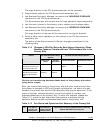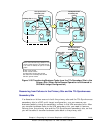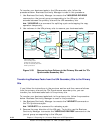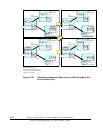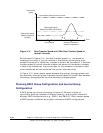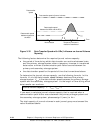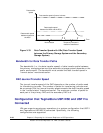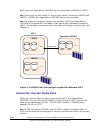
Chapter 3 Preparing for Universal Replicator z/OS Operations 3-57
Hitachi Universal Replicator for IBM /OS User’s Guide
The data transfer speed of a journal volume depends on the data transfer
speed of the RAID group that the journal volume belongs. One RAID group can
consist of one or more volumes, including journal volumes. Therefore, if
frequent accesses are made to non-journal volumes in a RAID group, relatively
fewer accesses can be made to journal volumes in the same RAID group, and
this can cause drop in the data transfer speed of journal volumes. To avoid
drop in the data transfer speed of journal volumes, you will need to consider,
for example, relocating the journal volumes and the frequently accessed non-
journal volumes (i.e., placing the journal groups in one RAID group and
placing the frequently accessed non-journal volumes in another RAID group).
Arranging Journal Volumes
The following indicates the data transfer speed of journal volumes mentioned
earlier in section
Computing Required Data Transfer Speeds for Journal
Volumes.
If a host attempts to write data of "aa" kilobytes and the number of write I/Os
per second is "bb", the data transfer speed required for journal volumes is
calculated as follows:
Data transfer speed of journal volumes > aa × bb ÷ 1,024
(MB/sec)
The data transfer speed of journal volumes must exceed the data transfer
speed from hosts to the primary storage system. You must consider the data
transfer speed (i.e., the speed for writing and reading) required for journal
volumes, determine physical volume configuration and RAID configuration of
RAID groups, and create journal volumes in the RAID groups.
Computing the Journal Volume Capacity
In Figure 3-32, the size of the shaded area indicates the amount of journal
data to be stored in journal volumes as a result of temporary increase in data
transferred.
If a temporary communication path failure occurs between the primary storage
system and the secondary storage system, journal transfers between the
primary storage system and the secondary storage system will stop
temporarily. If hosts transfer data to the primary storage system while journal
transfers between the primary storage system and the secondary storage
system are stopped temporarily, all the data transferred from hosts to the
primary storage system will be stored as journal data in journal volumes.



